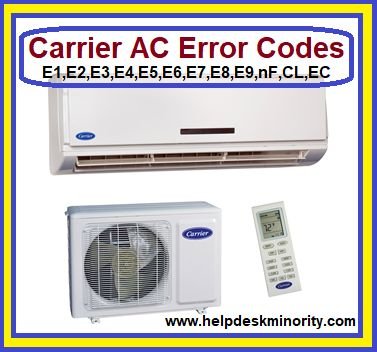
Here’s the deal: Air conditioners, much like your smartphone, produce error codes when something goes awry. These codes are like little SOS signals, letting you know the machine needs a bit of attention. When you see an E3 error, it’s your air conditioner’s way of alerting you that there’s an issue with the temperature sensor. This sensor is crucial because it helps your AC maintain the right temperature, like a thermostat’s sidekick ensuring comfort in your home. So, before you hit the panic button, let’s dive deeper into what this means for you and your trusty Honeywell air conditioner.
Understanding the E3 Error Code
You might be wondering, “What exactly is this E3 error code all about?” Well, think of your air conditioner’s temperature sensor as its very own meteorologist. This sensor reads the room temperature and sends that data back to the AC’s main control board. If something goes wrong with this communication, your AC might send out an E3 error code, signaling that it can’t accurately assess the room temperature.
The E3 code typically means there’s a problem with the sensor itself or the wiring that connects it to the AC’s brain. It could be that the sensor is faulty, or perhaps the connection has come loose. Just like trying to listen to music with a broken headphone jack, the AC can’t function properly if the sensor isn’t delivering accurate information. This can cause the AC to operate inefficiently, potentially making the room too hot or too cold.
While this might sound alarming, don’t fret just yet. The presence of an E3 error doesn’t mean your air conditioner is beyond repair. In many cases, it simply requires a bit of troubleshooting and maybe some maintenance. Before you attempt anything yourself, it’s always a good idea to consult the user manual or reach out to Honeywell’s customer support for specific guidance on handling this issue.
Is It Safe to Use an AC With an E3 Error?
Now, let’s tackle the burning question: Is it safe to continue using your Honeywell air conditioner if it’s displaying an E3 error code? The short answer is, it depends. On one hand, the E3 error indicates that your AC might not be functioning optimally, but on the other hand, it isn’t necessarily a direct safety threat like a gas leak would be.
Continuing to use your AC with an E3 error might lead to inefficient cooling. Imagine trying to follow a recipe when the measurements are all wrong; you might end up with too much salt or not enough sweetness. Similarly, without accurate temperature readings, your AC could end up overworking itself, which might increase energy consumption. This inefficiency not only raises your energy bills but could also lead to further wear and tear on your unit.
However, if you notice anything out of the ordinary—like strange noises or a burning smell—it’s best to shut off the unit and call in a professional right away. It’s a bit like noticing smoke coming from your toaster; it’s a clear sign to stop and get help. Meanwhile, keeping an eye on your AC’s performance can help you decide whether you need immediate intervention or if it can wait until a more convenient time.
How to Address the E3 Error Code
Alright, so your Honeywell air conditioner is flashing the E3 error, and you’re eager to fix it. First things first, make sure to turn off the unit and unplug it for safety. After all, working with electrical appliances is a bit like handling a DIY project with glue guns—better safe than sorry!
The next step is to inspect the temperature sensor and its wiring. This might mean opening up a panel on the unit to take a look inside. If this sounds daunting, don’t hesitate to call in a professional technician. But if you’re feeling adventurous and have a bit of a knack for DIY, you can carefully check to see if any wires are loose or if the sensor looks damaged.
If everything seems connected properly, but the E3 error persists, your next course of action could be replacing the sensor. Most sensors aren’t very costly, and replacing them can often solve the issue. However, if the thought of tampering with your AC’s innards makes you uneasy, hiring a professional is always a solid choice. They can diagnose and fix the issue in less time, potentially saving you some stress and a learning curve.
Preventative Tips for Air Conditioner Maintenance
Maintaining your air conditioner to prevent future error codes is a bit like keeping a car in good condition—it requires regular check-ups and a bit of TLC. One of the best ways to prevent error codes like E3 is to ensure your AC is serviced regularly. This doesn’t have to be as frequent as oil changes for your car, but annual maintenance checks can keep things running smoothly.
Make sure to clean or replace air filters regularly, as clogged filters can lead to a host of issues, including reduced airflow and sensor malfunction. It’s similar to breathing through a blocked straw; not very efficient, is it? Keeping the unit clean and free of dust buildup can also help prevent sensor issues.
Lastly, periodically check the manufacturer’s website or contact customer support for any software updates or recalls. Sometimes, like a smartphone getting an update, these can solve underlying issues you might be experiencing. Staying informed and proactive with maintenance can help you avoid those pesky error codes and ensure your Honeywell air conditioner keeps your home comfortable for years to come.